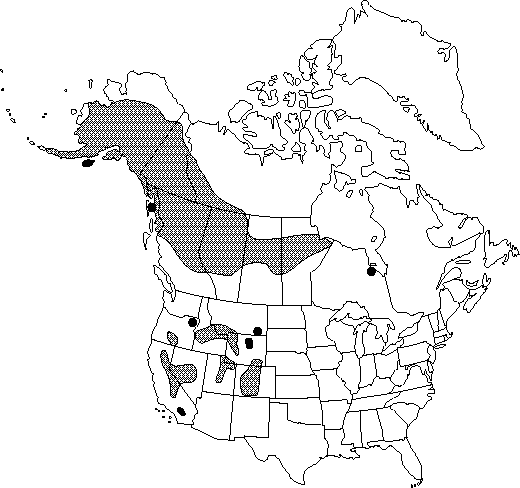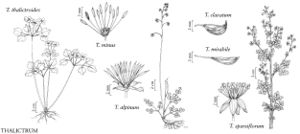Difference between revisions of "Thalictrum sparsiflorum"
Index Sem. Hort. Petrop. 1: 40. 1835.
FNA>Volume Importer |
FNA>Volume Importer |
||
| Line 64: | Line 64: | ||
|publication year=1835 | |publication year=1835 | ||
|special status=Selected by author to be illustrated | |special status=Selected by author to be illustrated | ||
| − | |source xml=https://jpend@bitbucket.org/aafc-mbb/fna-data-curation.git/src/ | + | |source xml=https://jpend@bitbucket.org/aafc-mbb/fna-data-curation.git/src/f6b125a955440c0872999024f038d74684f65921/coarse_grained_fna_xml/V3/V3_277.xml |
|genus=Thalictrum | |genus=Thalictrum | ||
|section=Thalictrum sect. Omalophysa | |section=Thalictrum sect. Omalophysa | ||
Revision as of 19:53, 24 September 2019
Stems erect, leafy, slender, (20-)30-100(-120) cm, glabrous. Leaves mostly cauline, proximal leaves petiolate, distalmost sessile. Leaf blade (2-)3-ternate; leaflets obovate to orbiculate or cordate, usually 3-cleft and divisions 3-lobed, thin, 10-20 mm, surfaces abaxially often glandular-puberulent. Inflorescences axillary, 1-few flowers, diffuse, leafy; bracts leaflike, large. Flowers: pedicels abruptly recurved in fruit; sepals whitish or greenish, often purplish tinged, elliptic, 2-3.5(-4) mm; stamens 12-20, whitish; filaments 3-4.5 mm; anthers 0.5-0.8 mm. Achenes (4-)6-12; stipe 0.3-1.5 mm; body obliquely obovate to half-rhombic, strongly compressed, (4-)5-6 × 3-4 mm, abaxial margin straight, glabrous or glandular-puberulent, faintly 3-4(-5)-veined; beak 1-1.5 mm.
Phenology: Flowering late spring–summer (Jun–Aug).
Habitat: Meadows, damp thickets, bogs, and coniferous, deciduous, and riparian woods
Elevation: 0-3000 m
Distribution

Alta., B.C., Man., N.W.T., Ont., Sask., Yukon, Alaska, Calif., Colo., Idaho, Mont., Nev., Oreg., Utah, Wyo., ne Asia.
Discussion
The Cheyenne the flowers and ground plants of Thalictrum sparsiflorum medicinally to make their horses "spirited, long-winded, and enduring" (D. E. Moerman 1986).
Selected References
None.
